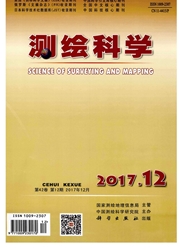

 中文摘要:
中文摘要:
PM_(2.5)已对我国的空气质量构成了严重威胁,对其预警、预报具有重要的意义.由于PM_(2.5)数据同时具有时间与空间属性,而目前的研究缺少对其时空属性的探索与挖掘.以2015年10~12月华北地区58个城市的日均PM_(2.5)浓度数据作为实验数据,利用时空自回归移动平均(STARMA)模型及只考虑时间属性的自回归移动平均(ARMA)模型对PM_(2.5)进行预测,并利用时空克里金插值与只考虑空间属性的普通克里金插值对PM_(2.5)进行插值.结果表明,STARMA模型与ARMA模型的预测相比,时空克里金与普通克里金的插值相比,PM_(2.5)预测及插值精度均有所提升,且具有时空灵活性.
 英文摘要:
英文摘要:
The air quality of China has been seriously polluted by PM_(2.5).It is necessary to warn and forecast PM_(2.5)in China.The data of PM_(2.5)has time and space dual properties,but currently,there is little study in spatio-temporal data mining of PM2.5.The daily average PM_(2.5)concentration datum of 58 cities in North China during October to December 2015 were acquired as experimental data,then the PM_(2.5) data were respectively predicted by space-time autoregressive moving average(STARMA)and ARMA model which just considered the time property of the data,and the PM_(2.5) were interpolated by space-time Kriging(ST-Kriging)and ordinary Kriging which just considered the space property of the data.Experimental results show that compared with ARMA and ordinary Kriging model,STARMA and ST-Kriging with the flexibility of time and space have considered the space-time correlation of PM_(2.5)data and could improve the prediction and interpolation accuracy.
 同期刊论文项目
同期刊论文项目
 同项目期刊论文
同项目期刊论文
 期刊信息
期刊信息
